- Home
- News
- General News
- Picasso meets Einstein...
Picasso meets Einstein – the ESRF produces an art exhibition
08-02-2012
Three-dimensional X-ray images turned into an oil painting, molecules and phonons inspiring the shape of a sculpture, a time-lapse mosaic of what scientists see at work – the ESRF and the European Commission have joined forces to shed light on the common roots of creativity in science and the arts. The results are on display in an exhibition at the European House in Berlin (Germany) from 7 February to 30 March 2012.
Share
In July 2011, four young artists from the Czech Republic, Sweden and Portugal visited Grenoble in France where they met with ESRF scientists, observing them and their work place for five days. By the end of their stay, they had produced works of arts inspired by a wealth of new impressions. These art pieces, along with short video documentaries on their creation, have been assembled into an exhibition inaugurated on 7 February 2012 in Berlin (Germany) by Helmut Krech for the ESRF and Matthias Petschke, Head of the European Commission Representative Office in Germany.
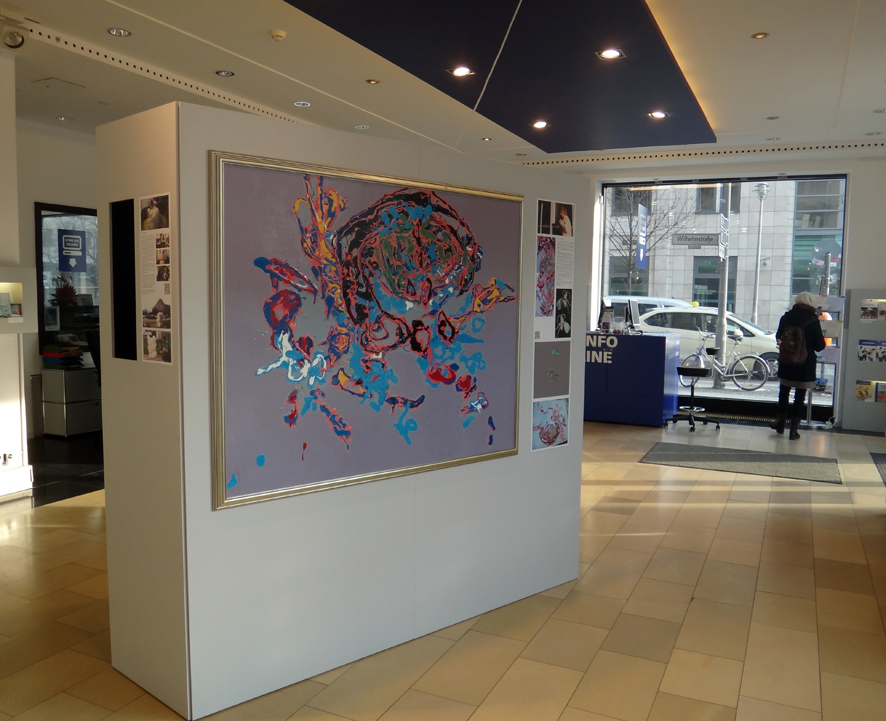 |
Oil painting by Nina Grunova |
|---|---|
The four artists, 21 to 25 years young, had been given “carte blanche” by the ESRF for their creativity with only one requirement: their art pieces should be visible like an image. No wonder each artist chose a different means of expression, ranging from a large oil painting to 21st century installation art.
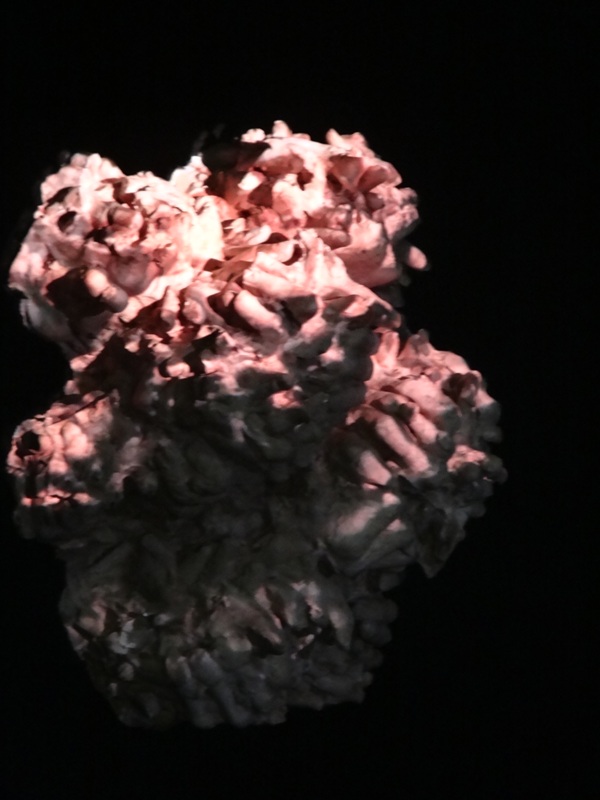 Jan Nalepa's illuminated sculpture as seen by a visitor to the exhibition.
|
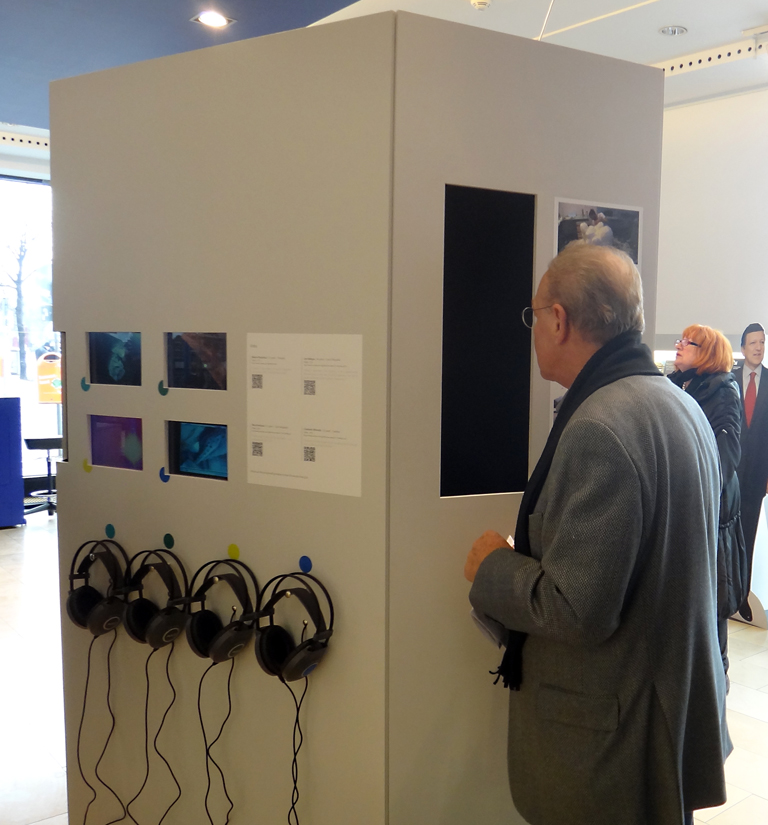 |
|---|---|
Jan Nalepa (CZ) created a sculpture inspired by the concept of molecules and phonons; in the exhibition, it is located in the dark volume inside the main structure, illuminated by a beam of light just as X-rays illuminate atomic structures. Nina Grúñova (CZ) used an oil painting technique for her interpretation of microtomography X-ray scans of fossils; in her painting, numerous layers of acrylic paint in different colour have been superimposed, creating an abstract image of a fossil wasp more tha 100 million years old. Charlotte Winroth (SE) used a computer to build a mosaic-like composition resembling a time-lapse recording made from images in a scientist’s daily life; Marció Paranhos (PT) captured the invisible spirit of science in animations derived from geometrical objects that appear and disappear in real video images he had recorded in the ESRF experimental hall.
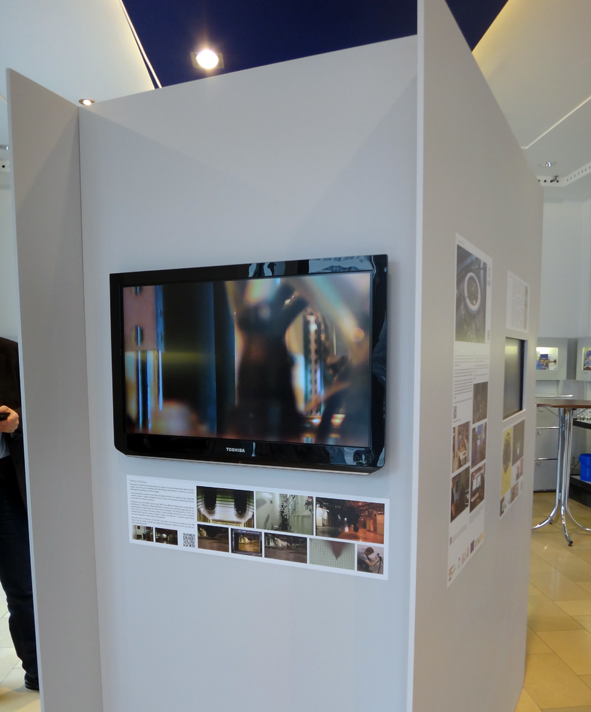 |
The art installation by Marcio Paranhos is shown on a large video screen (left). Charlotte Winroths' time-lapse mosaic also fills a video screen and is complemented by prints of some of the images used in her work.
 |
|---|---|
The visit of the four young artists to the ESRF and the production of this exhibition are forming part of a European Project, Immersion into the Science Worlds through Arts, led by Franco Rustichelli from the Universitá di Ancona (IT) and funded under the Framework 7 Programme of the European Commission. The exhibition, designed by Adam Majorosi from Berlin, is on display at the European Commission representative office in Germany, Unter den Linden 78, D-10117 Berlin, until 30 March 2010 and will afterwards travel through several European countries.
| Helmut Krech, former ESRF Director of Administration, (right) in discussion with Matthias Petschke, Head of the EC Representative Office in Germany, at the opening ceremony. | 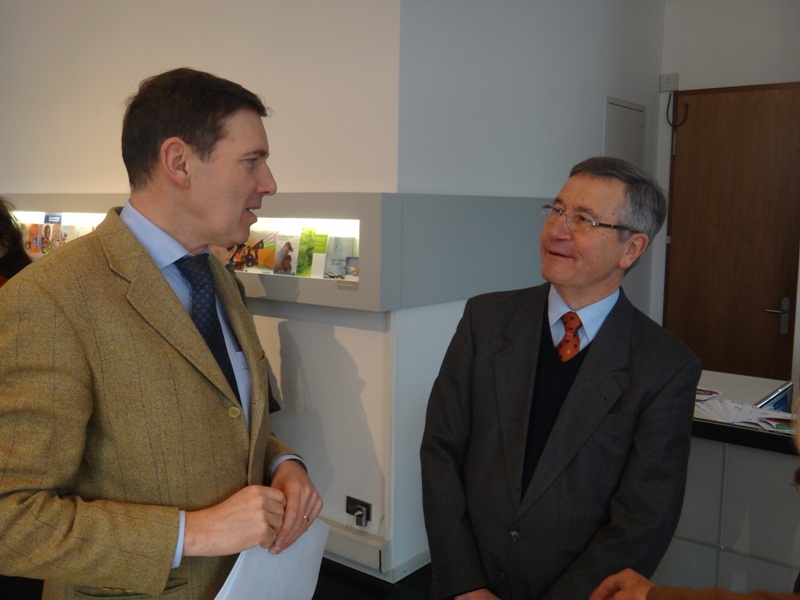 |
|---|---|
Further information on the ISWA Project: http://iswa.fisica.unina.it/index.php/the-project
The short video documentaries on each artist’s work are online at YouTube:
http://www.youtube.com/watch?v=1tl4WgnLLoQ
http://www.youtube.com/watch?v=6QaSgocKF7k
http://www.youtube.com/watch?v=e7Cd-zc-MtI
http://www.youtube.com/watch?v=H-5HtBYv3gI



